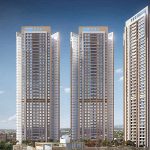Between 2010 and 2015 there was a wave of second homes in and around Mumbai. Places like Lonavala, Alibaug, Shapur, Boisar etc. suddenly emerged as hot destinations. Many leading developers, including Tata Housing, Mahindra Life spaces, Lodha Developers, Hiranandani group etc., ventured into these new hotspots with a range of housing products. At the same point of time, there were many local developers who came with the concepts of plotted schemes.
The plots were of two types, one, “Non- agriculture” (NA) and the other, “Farm Plots”. While anyone could buy NA plots, but one needs to be a farmer in order to purchase agriculture plots in Maharashtra (True for many most of the sates in India). People in Mumbai starving for “space” looked at these options like a breath of fresh air. Many flocked to the second home and plotted scheme projects, making a busy weekend traffic for these city gateways.
The trend was apparent in most of the metro cities, even in some tier 2&3 cities like Nagpur, Nasik and Indore. In the NCR region, three corridors emerged in prominence, namely NH1- places near Sonapat and Kundli, Vrindavan and Govardhan along NH-2 and the Neemrana- Behror Corridor. For Bangalore, it extended beyond Electronic city or along the extension of Hosur Road and Sarjapur road. In Chennai, it extended on the OMR and ECR. For Nagpur and Ahmedabad, it was beyond the outer ring road. Both cities started the outer ring road project with a futuristic vision of larger urban agglomerations.
Second homes are usually looked as a relaxing place where people can take a break without travelling too far, entertain guests, also a social status. The second home projects also had an investment angle. Many would invest in agriculture land at a lower price in anticipation of multiplying the investment whenever there is a Road Scheme or any Planning scheme gets approved, as would be touted by most of the plotting schemes. All the three major highways, Mumbai- Pune, Mumbai –Nashik and Mumbai Goa would be full of hoardings attracting the views of the passer by. But, this bubble did not take long to get burst. Firstly, there was no underpinning of the investment theory in land. It entirely relied on speculation, hearsay and supposed externalities. More than that, dubious nature of land entitlement and no after sales service made them look dead and deserted in no time. Thus, ended the saga of first wave of individual investments in land.
2015 onwards there was a downward spiral in the core real estate itself with residential sales dipping in prime markets, while inventory overhang coupled with liquidity crisis made the developers focus only on executable, city-centric projects. The demonetization had put the last nail in the box, as land was a hot bed of parking excess cash. Land as a product disappeared from the radar of the buyer till it came back quietly in a different avatar.
The driving force behind this is the changing lifestyle. Increasingly people are becoming health conscious, keeping a watch on what they are consuming. The awareness levels are increasing. Various experts are talking correlation between food and lifestyle diseases like Hypertension, Sugar, Cholesterol, even Cancers. As a result, there is a growing demand for the food that is organically grown, veggies those are farm fresh and food which has the best nutritional values.
For urbanites, it is not possible to grow their own food in the desired manner. The supplies that come in the market, under the “Organic Category”, are also not always certified.
Thus, there is a gap and this gap has prompted some of the startups to think of a business using the farm lands in the fringe areas of the Metros. The product is a combination real estate investment, as well as benefits that accrues along with it. The “Managed Firm” concepts have caught the imagination of many city dwellers, who want assured supply of veggies which is quality checked and have no experience or resources to do the same.
There are a few such operators who started offering the “managed firm” product. For Example, Holistic nature Homes in Mumbai Region, Nisarga Woods Pvt Ltd., Hosachiguru Ltd in Bangalore Region, Urban Kissan from Hyderabad region, Triakaya from Pune region are among the players offering regular income stream along with all the goodies of the erstwhile second home or farm house concepts. The buyers here are not necessarily farmers and legal structures are taken care of.
The new group of players are not the typical set of developers. Rather, they are serious agriculturists, tech boys, first generation entrepreneurs and many of them are backed by venture funds. They deploy high end technologies, such as “hydroponics”, “Poly houses”, “Multi Layered Firming”, etc. They also deploy technology in managing the firms’ marketing and logistics. The investments in terms of ticket size could be from Rs 30 lakh to a few crores, depending on the size and scale. The products are available in various combinations with an assured share of fresh farm produces or fixed monthly income, or both. There is an annualized return on investment to the tune of 10-12% and the appreciation of the land values over a longer period.
At a time when the investment avenues in real estate are dwindling , residential sector is under deadlock, commercial, hospitality and retail are with high risk of vacancy and cash flows, there seems to be some silver lining to going back to investment in land, the old fashioned real estate ways, albeit with a new twist. With food security concerns, and ever-increasing urban need for high-quality food, this twist is likely to work in the near future.
(Source: Financial Express)





